
Fish, mines and Indigenous Rights ensnared in court case in northern Ontario
Establishing the Robinson Treaties, covering land around Lake Huron and Lake Superior, created a mess...
Trans Mountain’s $34-billion oil pipeline expansion entered into commercial operation on May 1 — 12 years after a Texas-based fossil fuel firm first trumpeted the project.
The road to the fossil fuel pipeline, now owned by the federal government, has been winding and rough. It has involved complex relationships with First Nations with varied views of the project, arrests of people demonstrating against the pipeline’s environmental impact, multiple Supreme Court battles, massive cost overruns and repeated construction delays.
Even though it’s now built, the story isn’t over. Key questions remain about potential Indigenous ownership, and what fees oil companies will ultimately pay to use the pipeline. At the same time, some First Nations still oppose the project.
Let’s take a step back. This pipeline saga has gone on so long that you might be wondering, “Wait, what is Trans Mountain again” We’ve got you covered.
Here’s a refresher on some of the major twists and turns in the Trans Mountain story.
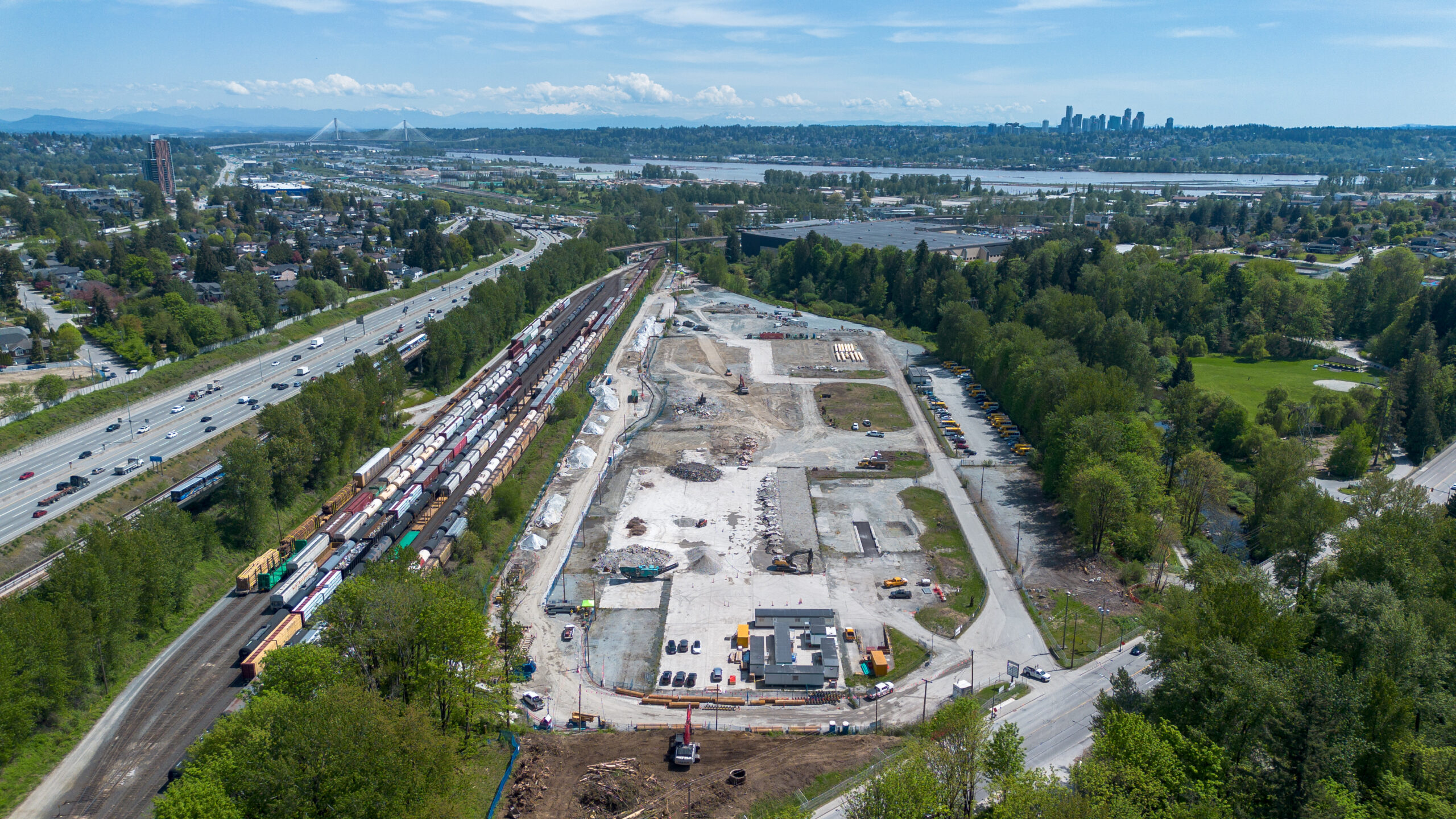
The current Trans Mountain pipeline transports heavy crude oil and refined petroleum products like gasoline from the Edmonton area across 1,150 kilometres, through B.C., to refineries and export terminals on the West Coast, including to Washington State south of the border.
Trans Mountain was established in 1951 and was operational by 1953, according to the company’s website. The pipeline was built to take advantage of an oil boom in Alberta, after Imperial Oil discovered crude near Edmonton.
Representatives from the federal government, Alberta and B.C. endorsed the idea of a new pipeline from the Prairies to the West Coast in the 1950s in order to “create a vital market for Alberta’s crude oil resources,” according to a historical background report on Trans Mountain written by Toronto Metropolitan University associate professor of history Sean Kheraj. For its part, Trans Mountain sold the idea of a pipeline as a piece of Cold War strategic defence infrastructure, supplying the West with energy in the event of war.
At the time it was built it could carry 150,000 barrels of oil per day. According to Kheraj’s report, over the decades the pipeline system expanded and contracted depending on global energy markets and Canadian oil consumption patterns.
In the 1990s, the pipeline experienced growth, Kheraj wrote, as the Alberta oilsands began to produce more and more heavy crude oil. In the 2000s the pipeline was expanded with new sections of pipe and new pump stations. Its capacity increased to 300,000 barrels per day. The latest proposed expansion would almost triple that capacity.
Data compiled by the B.C. Utilities Commission shows how the Trans Mountain pipeline has already helped solidify Canada’s status as the fourth-largest crude oil exporter in the world — and a major supplier of crude oil to the United States, where nearly all of Canada’s exported crude has typically ended up.
The majority, or 53 per cent, of the petroleum products sent down the pipeline over the last two decades or so was exported to the United States, the commission’s data shows, while another 21 per cent was loaded onto oil tankers at the Westridge Marine Terminal in the Vancouver area — some of which head to refineries on the U.S. West Coast. The remaining 26 per cent was routed to B.C. destinations.
While it provides fossil fuel resources that communities have used for decades, it has also been controversial from the start. The Union of British Columbia Indian Chiefs said the original construction “damaged and destroyed at least 58 Indigenous archaeological sites — including village sites and burial grounds.” The pipeline was built during a time when Indigenous Rights and Title were even more ignored than they sometimes are today.
The pipeline has also been an environmental threat. Between 1961 and 2019 the company said it spilled crude oil, diesel fuel and other substances at least 84 times, including in 1985 when a tank farm near Edmonton spilled nearly 10,000 barrels of oil. In 2020, the pipeline system spilled 1,200 barrels of crude oil in B.C. near the source of Sumas First Nation’s drinking water, a leak made more risky in 2021 when floodwaters exposed sections of the pipeline.
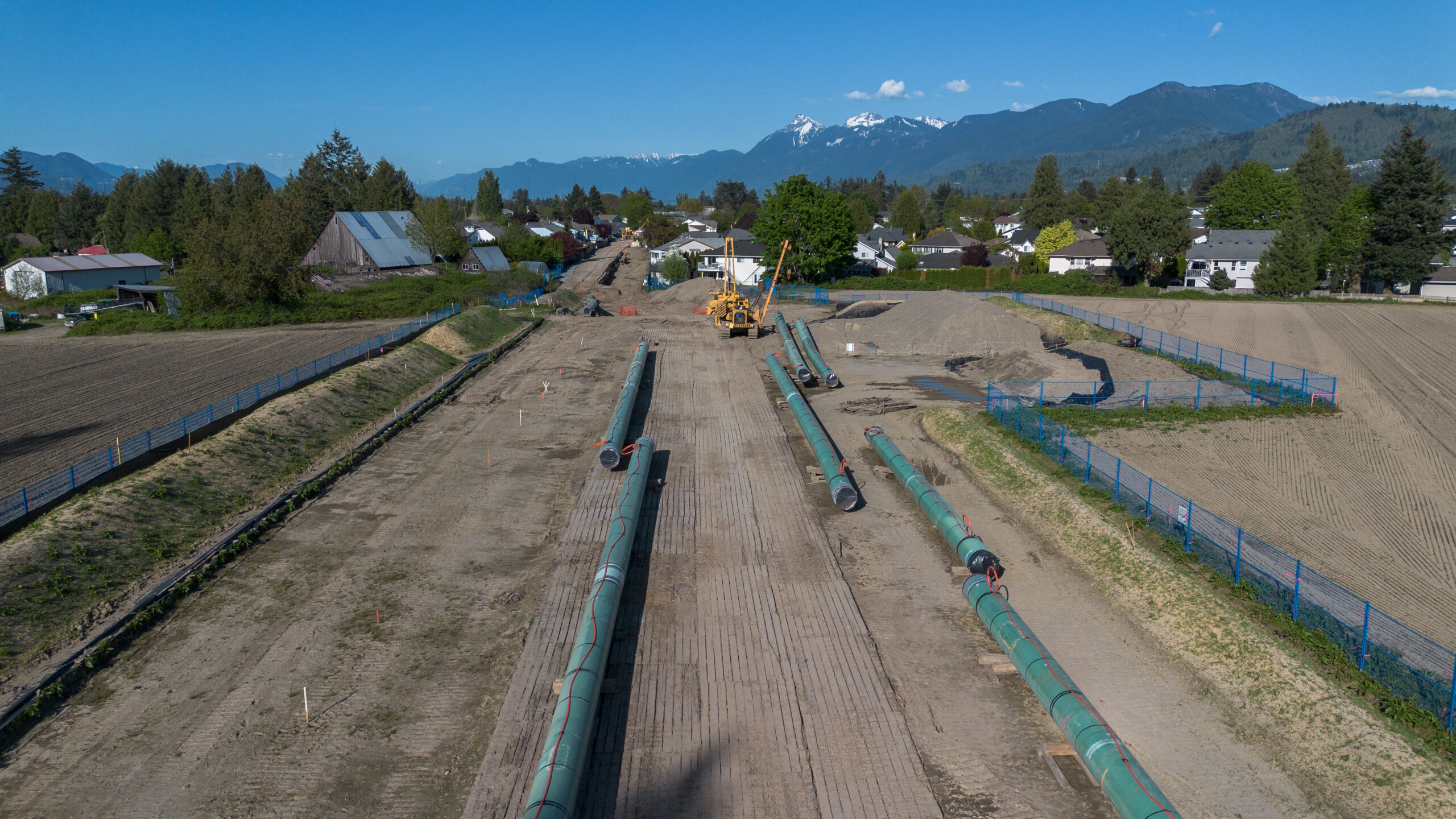
Fast forward to the 2010s. The oilsands were booming, with new mining technologies and new megaprojects digging up more and more crude oil (and producing more carbon pollution). Fossil fuel companies like Imperial Oil, Suncor, Cenovus, Canadian Natural Resources and others claimed they could reach new markets for their oil by expanding the pipeline.
By 2012, Texas-based Kinder Morgan, which had bought Trans Mountain seven years earlier, said it had determined there was enough demand to double the capacity of the pipeline to 600,000 barrels per day. The next year, Kinder Morgan applied to pursue an even bigger project, building almost 1,000 kilometres of new pipeline and increasing capacity so that it could ship up to 890,000 barrels per day. The expansion also proposed many more pump stations, storage tanks and tanker facilities.
The result would mean an explosion of oil tanker traffic in the Burrard Inlet near Vancouver, from roughly 60 tankers per year to more than 400 to haul away all that extra crude.
As regulators considered the project, the political winds shifted. The NDP led by Rachel Notley were elected in Alberta in 2015, and the Liberals led by Justin Trudeau were elected federally the same year. Both Trudeau and Notley talked about climate change and the need to get greenhouse gas emissions down. Both would also support the Trans Mountain pipeline expansion project.
Trudeau said Canada needed both “pipelines and wind turbines” to achieve its goal of fighting climate change — and that he saw his government’s job as ensuring there is a “market for our natural resources” as much as ushering in the energy transition. It was an echo of a message he sent in 2013 in Calgary, when he said the government’s role was to “open up markets abroad for Canadian resources and to help create responsible, sustainable ways to get those resources to those markets.”
Notley also told the federal energy regulator at the time, the National Energy Board, in January 2016 that the Trans Mountain pipeline expansion was in Alberta and Canada’s best interests. That May, the regulator recommended the pipeline be approved, subject to 157 conditions.
The prime minister approved Kinder Morgan’s expansion project in November 2016 — despite heavy criticism that the regulator’s review didn’t consider climate and other environmental impacts, and that it ignored scientific information such as the impact of oilsands development on at-risk species and human health.
Trudeau would later admit that his approval of the project was a political “trade off” for getting the Alberta government to sign on to his national climate plan.
In 2019 Trans Mountain estimated that the pipeline expansion and associated marine activity would generate about 400,000 tonnes of greenhouse gas emissions each year. The company has an emissions reduction plan that commits to cutting emissions 100,000 tonnes by 2030 and reaching net zero by 2050.
But that doesn’t address the impact on the climate of burning all the crude oil that the expansion project will help export out of Canada. Scientists have concluded that oil and gas production must be dramatically reduced to slow the dangerous effects of climate change. The Washington-based non-profit Oil Change International has found that Canada’s planned new oil and gas extraction from 2023 to 2050 is the equivalent of building 117 new coal plants. The estimated pollution from this and other oil and gas expansion around the world would make it impossible to prevent global average temperatures from rising by more than 1.5 degrees Celsius above pre-industrial levels, according to the advocacy group.
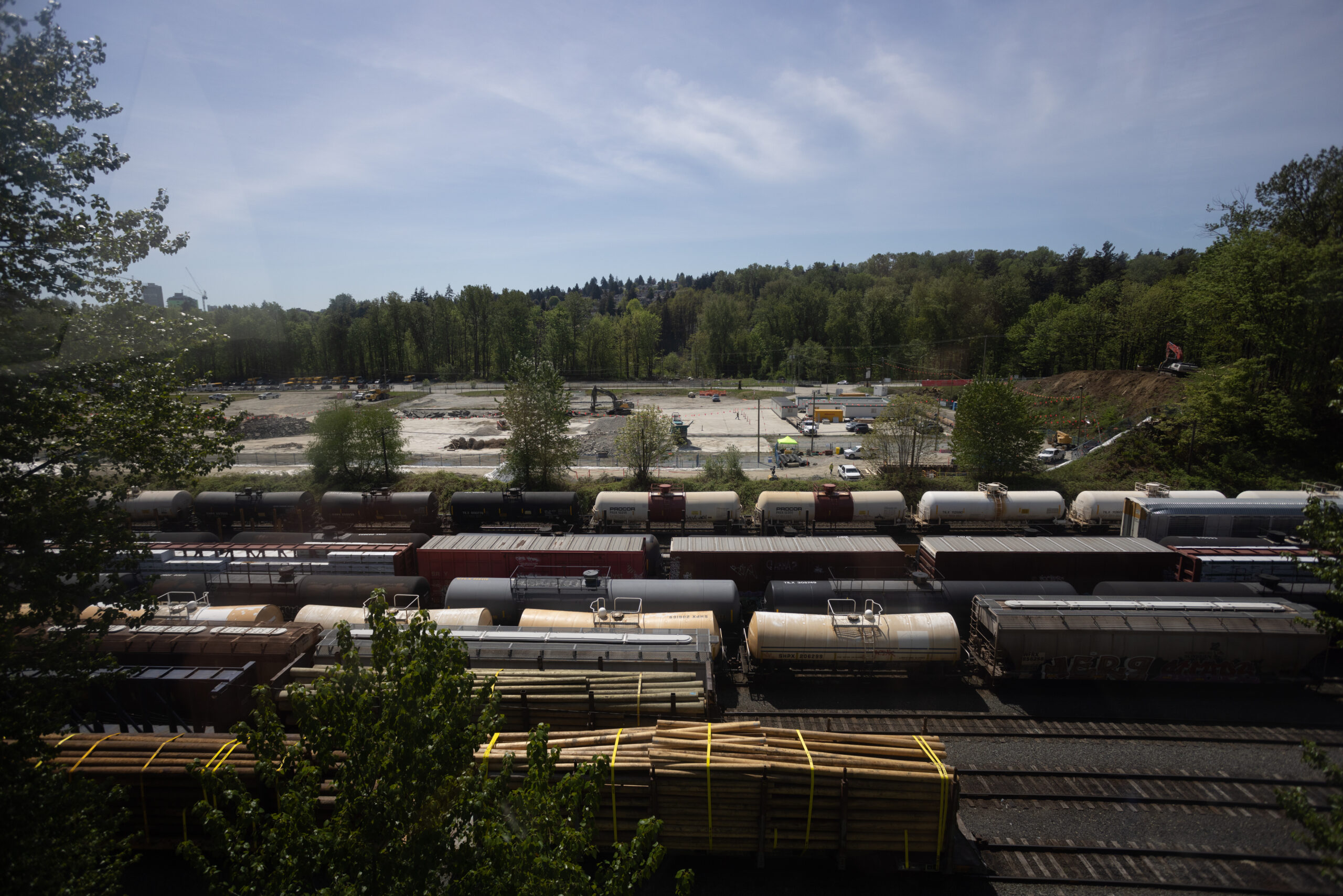
Not so fast. After Trudeau’s approval, opposition to Kinder Morgan’s expansion project only increased. For one, several directly affected First Nations launched legal actions, including the Tsleil-Waututh First Nation .
In June 2017 a coalition between the B.C. NDP and Greens won power in the province after former premier Christy Clark’s minority government lost a no-confidence vote. The new premier, John Horgan, said he would use “every tool in our toolbox” to stop the expansion project. The Quebec government also objected to the pipeline on the grounds the government was intruding on provincial powers.
Protests near the site of construction work led to arrests, including eventually Green Party Leader Elizabeth May. Things were heating up.
Journalists honed in on the flawed process behind the pipeline’s approval, discovering the Trudeau government had pressed forward despite evidence that First Nations felt the consultations were “paternalistic” and failed to address their rights.
In April 2018, amidst all the inter-provincial fighting and public demonstrations, Kinder Morgan paused its work and threatened to walk away from the project in a matter of weeks unless it received “clarity” on how it could build the pipeline through B.C., as the provincial government was still heavily opposed.
“A company cannot resolve differences between governments,” Steve Kean, the CEO at the time, said in a press release.
That sent the federal government scrambling to bring Horgan and Notley together and come up with a plan, or watch the pipeline project be abandoned.
Trudeau had already rejected another proposed pipeline backed by Enbridge called Northern Gateway, and he was facing calls from Notley to offer serious financial help for the project, in the same way the federal government had bailed out Air Canada during the 2009 financial crisis.
Trudeau had also, by this point, made it part of his political identity to strongly support the pipeline expansion. “Access to world markets for Canadian resources is a core national interest. The Trans Mountain expansion will be built,” he tweeted at the time.
The next month, the government announced it was purchasing both the pipeline and its expansion project from the company for $4.5 billion. Trans Mountain became a subsidiary of a Crown corporation called the Canada Development Investment Corporation, and would eventually benefit from significant state-backed financing and loan guarantees.
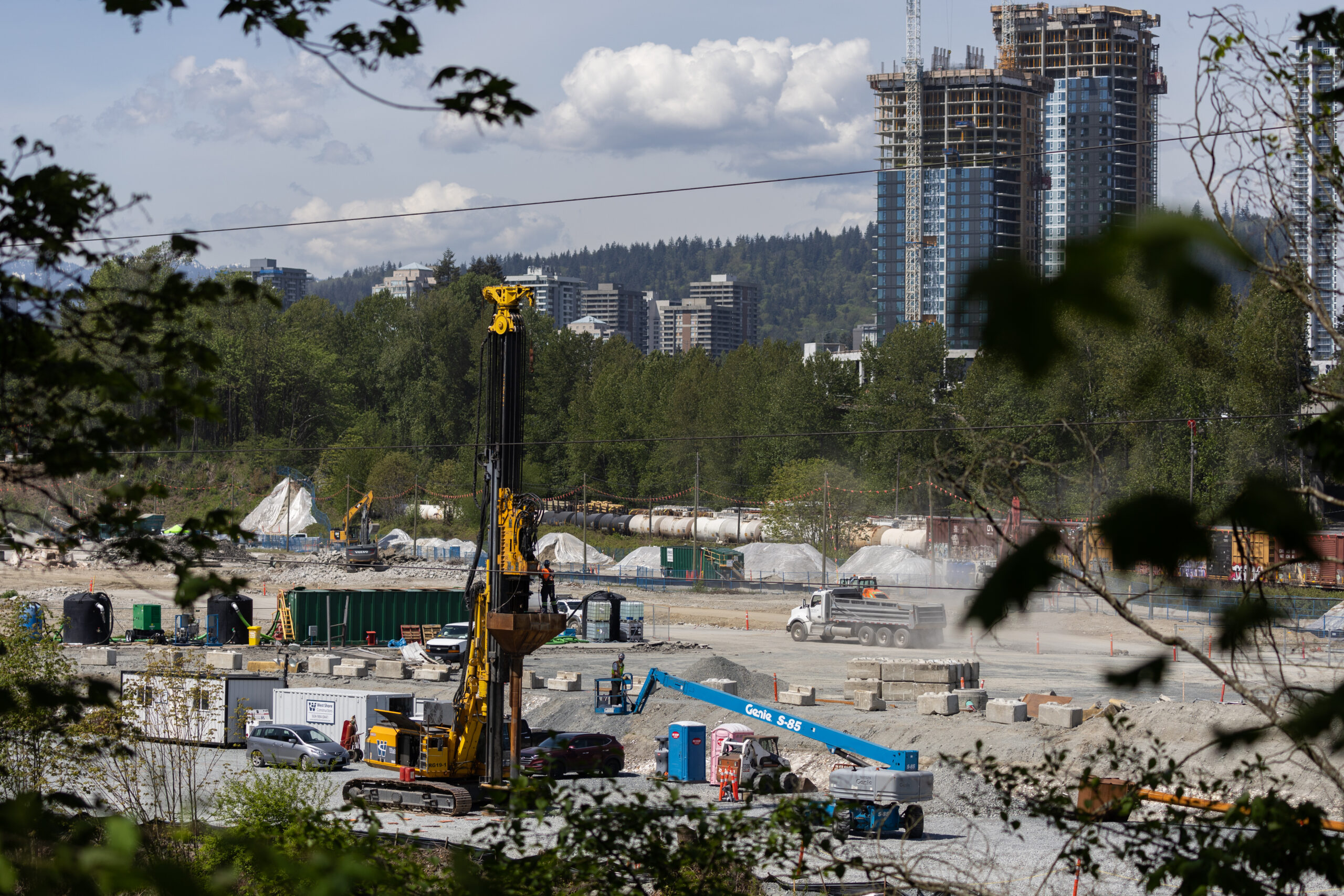
A few months after the government bought the pipeline, the Federal Court of Appeal quashed the expansion project’s approval, saying Canada failed to meaningfully consult with First Nations.
The ruling also found the regulator’s report had ignored the increased oil tanker traffic that would result from the pipeline’s construction.
But a series of high-profile legal victories for the government following that decision has allowed it to continue to expand the pipeline.
The national energy regulator considered the project again, and recommended again in early 2019 that the project be approved. Trudeau signed off on it for a second time in June 2019.
A second Federal Court of Appeal ruling in 2020 found this second approval was reasonable under the law.
In January that year, the Supreme Court also rejected B.C.’s attempt to block the project.
B.C. had tried to amend a provincial law to essentially ban interprovincial shipments of heavy oil, despite the constitution handing Ottawa jurisdiction over interprovincial projects.
In July 2020 the Supreme Court dismissed an application from Tsleil-Waututh Nation, as well as Squamish Nation and Coldwater Indian Band, that attempted to overturn the second Federal Court of Appeal ruling.
When Kinder Morgan originally applied to almost triple the capacity of Trans Mountain, the company projected it would cost $5.4 billion and be “operational in late 2017.” Over the years the price tag has steadily increased, while the projected in-service date of the pipeline has continued to slip:
• By 2016, Trans Mountain was projecting a price tag of $6.8 billion and an in-service date of December 2019;
• By 2018, the total construction cost had jumped to $9.3 billion and the in-service date had moved to December 2021;
• By 2020, the price had risen to $12.6 billion and the in-service date had moved to December 2022;
• By 2022, Trans Mountain increased the price tag to $21.4 billion and said it expected “mechanical completion” in September 2023;
• By 2023, it pegged the cost at $30.9 billion and an in-service date of March 31, 2024; and
• By 2024, the cost was estimated at $34 billion with commercial operation beginning May 1, 2024.
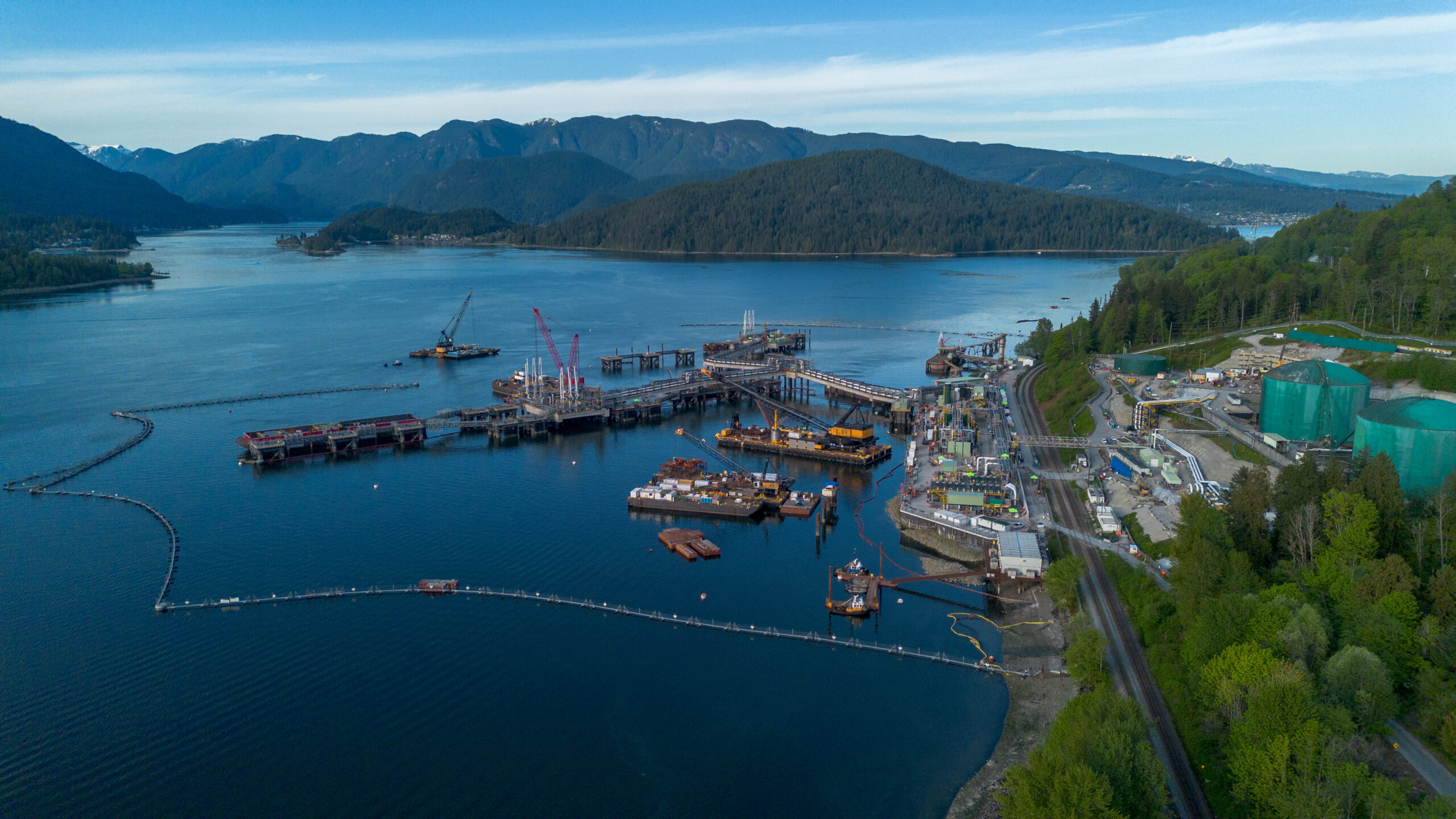
In an August 2023 letter to the federal regulator, Trans Mountain outlined the factors it saw as contributing to delays and cost overruns, compared to the assumptions it made for the project in 2016 and 2017, along with contractors and engineering firms.
In terms of delays, two major issues it cited were regulatory approvals and consultations with First Nations.
For example, the company had assumed “all critical permits and regulatory approvals” for the expanded pipeline would be secured by 2017, it wrote in the letter. But the Federal Court of Appeal’s decision to quash the first approval sent the process back to the drawing board until Trudeau approved it again in 2019.
The Federal Court of Appeal decision meant “Trans Mountain was required to conduct significant additional Indigenous consultation” that the company said, “further delayed the execution of the expansion project.”
Provincial regulatory processes “also took far longer to complete than expected,” the company said.
The regulatory delays, in turn, meant construction on the pipeline would substantially occur in 2019 and later — during a time when construction resources went from being in “abundance” to being tight, as competition for labour in B.C. heated up.
Two other large industrial projects in B.C., the Site C hydroelectric dam and the Coastal GasLink pipeline, were also being built and competing for resources, Trans Mountain said.
The labour shortage meant up to a fifth of the Trans Mountain expansion project’s workforce has been made up of apprentices, the company admitted in the letter. Having so many apprentices has required “additional oversight and ultimately lower productivity,” it said.
Trans Mountain also encountered a “previously unidentified, extensive abandoned landfill site” during construction on the pipeline between Burnaby and Coquitlam in B.C. That incident “required prolonged and extensive mitigation,” the company wrote in the letter.
The pipeline expansion project ran into several obstacles related to the COVID-19 pandemic, like B.C. Public Health officials restricting work on big projects in 2021 to limit the spread of COVID, as well as wildfires and flooding in B.C. and worker safety issues.
Wildfires and flooding in 2021 “resulted in forced shut-downs, associated demobilization and remobilization of resources, and missing key seasonal construction windows,” the company wrote in the letter.
In October 2020, a person working on the project died on the worksite. Trans Mountain was fined by the federal regulator for not putting in place processes to keep workers safe. Alberta Occupational Health and Safety also laid charges related to the death. Then in December that year, another worker was “seriously injured.” The company suspended all construction operations in the B.C. Lower Mainland.
The company estimated in 2022 that safety measures due to the pandemic and to extreme heat and wildfires had added about $1.4 billion to the cost. Other safety and security requirements added another $500 million, it said at the time.
In terms of costs, land values, in particular in the Lower Mainland, have jumped roughly 350 per cent compared to the initial cost estimate, Trans Mountain wrote in its 2023 letter. By March that year, the company was citing both inflation and global supply chain issues as reasons behind the total project cost surging.
Overall, by 2023 construction had progressed considerably from where it was in 2016. By July of last year, the first oil tanker was loaded at Trans Mountain’s dedicated berth at the Westridge Marine Terminal, while by August the company indicated construction was “94 per cent mechanically complete” — a term that typically means the item has been built but not tested or commissioned.
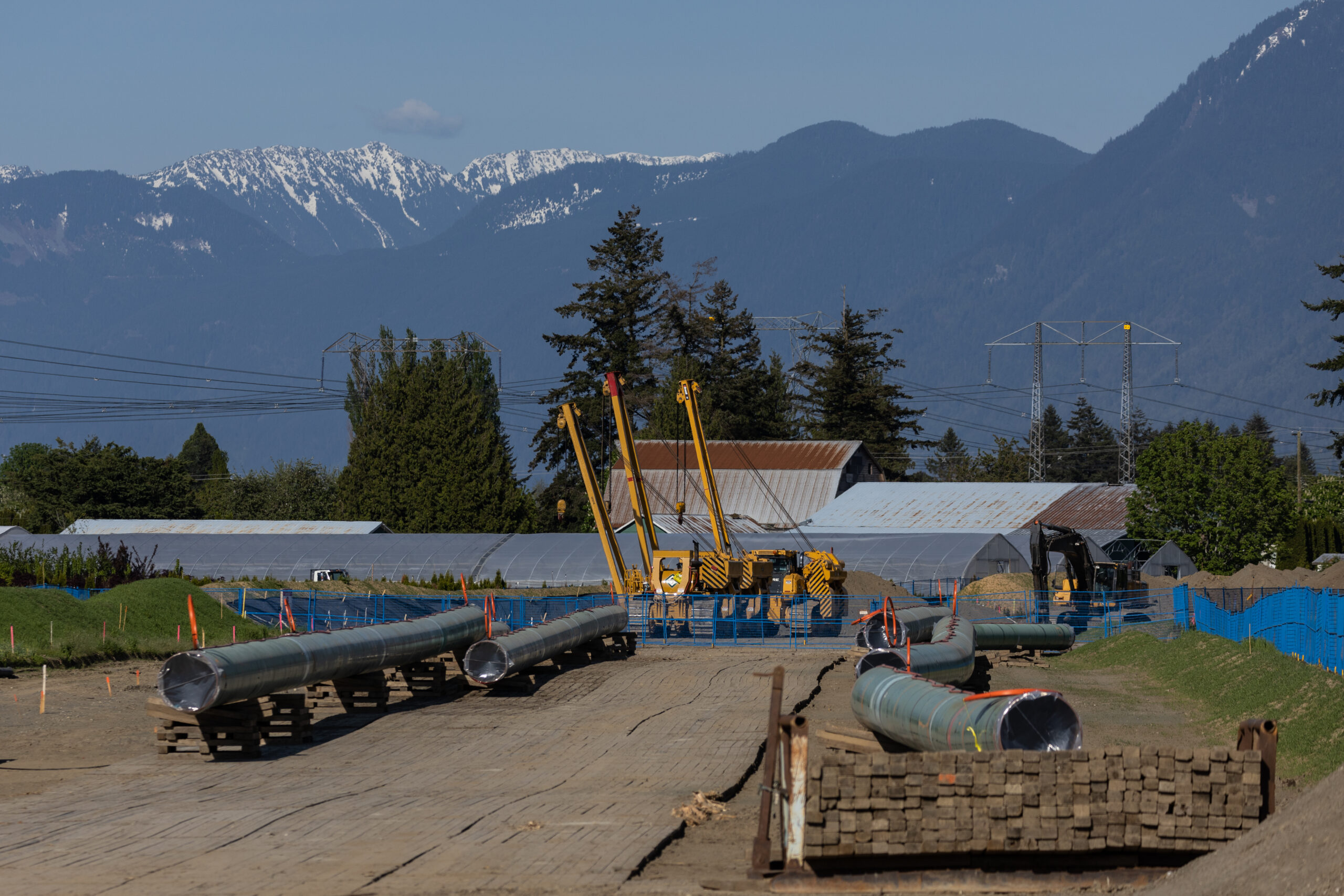
The Stk’emlúpsemc te Secwépemc Nation, who have a “historical, cultural and spiritual connection” to the lands the pipeline is built on, believe Secwépemc law was violated by the way Trans Mountains approached construction of the new pipeline.
Trans Mountain requested a change in the pipeline expansion’s route and construction method after running into problems drilling a tunnel in lands sacred to the nation, and the Canada Energy Regulator approved that request in the fall of 2023, despite the fact the Stk’emlúpsemc te Secwépemc Nation said they had never consented to such a change.
Meanwhile, the company warned that if it was denied regulatory approval, the completion date for its expansion project would have been pushed back again, possibly until next year, incurring hundreds of millions of dollars in extra costs.
But the nation’s chief and council are ramping up efforts to affirm Aboriginal Title in its territory.
Tsleil-Waututh Nation is also uncomfortable with the pipeline’s imminent completion. Rueben George, the spokesperson for the nation’s Sacred Trust Initiative, called it “devastating” in comments to the Times Colonist newspaper.
“The snowpack for British Columbia and Alberta is the lowest that it’s ever been. The floods, droughts and fires, all of this is going to get progressively worse, and it’s all directly related to the fossil fuel industry,” he said.
The Trans Mountain expansion destroyed key habitat for the endangered spotted owl.
Some parcels of land approved for tree cutting along the pipeline route were in old-growth forests and other habitat federal scientists said was necessary for the spotted owl’s survival.
Last summer, the environmental law charity Ecojustice said it would take the federal government to court, asking the government to issue an emergency order that would protect the spotted owl, something the federal environment minister said at the time he would recommend.
The federal court was asked to weigh in on whether the minister failed to comply with his duties under the Species At Risk Act. That decision is still pending but there is evidence the spotted owl is now extirpated from Canada, meaning it is nationally extinct.
Scientists have also expressed concerns over the impact of the anticipated increase in oil tanker traffic from the expansion project on the endangered Southern Resident killer whales. One issue is the impact of underwater noise that interferes in the whales’ ability to communicate and find food.
That’s one reason why the Tsleil-Waututh Nation has opposed the expansion project. The nation’s territory has already been significantly changed as urbanization and ship traffic have increased over the years.
The federal government has made interim sanctuaries for the whales, as well as mandatory speed restricted zones, requirements for vessels to stay away from the whales in southern B.C. coastal waters, agreements on whale watching bans, voluntary noise reduction, fishery closures to protect whale access to food and stricter limits on ocean pollution. It also said it will be consulting on further changes to rules surrounding how close vessels can get to the whales.
For many years, the pitch from the fossil fuel industry has been that the Trans Mountain expansion project was being built to satisfy an increasingly voracious appetite for fossil fuels from growing Asian economies.
“As countries in Asia Pacific begin to develop the same quality of life we enjoy here in Canada, they need to secure sources of energy,” Trans Mountain argues on its website.
“Canada is a natural trading partner for these countries, and with an expanded Trans Mountain Pipeline system, we will be in a position to provide for their growing needs for years to come.”
Some early evidence of this came in March when Chinese state-owned multinational Sinochem Group bought 550,000 barrels of petroleum from Suncor, one of the first shipments along the new pipeline, according to news reports.
Back in 2022, Russia’s invasion of Ukraine also provided a complicating factor. The war resulted in Western sanctions on Russian crude oil, meaning Russia began supplying Asian markets with cheap crude that would compete with Canadian petroleum, Reuters reported.
As a result, a “disproportionate” amount of the new volumes of petroleum sent down the expanded pipeline could wind up instead on the U.S. West Coast, energy consulting firm Wood Mackenzie told Reuters.
Only certain refineries can process the heavy, sulphur-rich oil that comes out of the oilsands. Some of these are in California and are considered by energy consultants to be prime suspects to process Trans Mountain petroleum — whenever it’s able to get there.
The federal government doesn’t want to be the pipeline’s owner forever. Since 2019, the government has been signalling it wants “Indigenous economic participation” in Trans Mountain.
One group that has previously expressed interest is Calgary-based Project Reconciliation, which has proposed a bond-financing plan it says would result in complete Indigenous ownership of Trans Mountain — with Indigenous decision-making powers and the group acting in an administrative role.
Another is Chinook Pathways, a joint venture between Western Indigenous Pipeline Group and Pembina Pipeline. A third group that has expressed interest is Alberta’s public-sector pension manager, Alberta Investment Management Corp.
Katherine Cuplinskas, a spokesperson for Finance Minister Chrystia Freeland, said in April the government has been speaking with different Indigenous groups about their potential participation, the Globe and Mail reported.
Meanwhile, the pipeline is still in an ongoing dispute over tolls, with oil shippers on the pipeline expansion expressing concerns about cost increases.
This story was updated at 12:18 p.m. Eastern Time on Sept. 26, 2023 to include new information related to the regulator’s decision dated Sept. 25 to approve Trans Mountain’s request to change its pipeline expansion route and construction method.
The story was updated again at 3:08 p.m. ET on May 1, 2024, to include the latest news about the pipeline’s startup date, cost estimates, the Stk’emlúpsemc te Secwépemc Nation title claim case, the spotted owl, Sinochem Group, Indigenous economic participation and the toll dispute.
Get the inside scoop on The Narwhal’s environment and climate reporting by signing up for our free newsletter. On March 17, federal Conservative Leader Pierre Poilievre...
Continue reading
Establishing the Robinson Treaties, covering land around Lake Huron and Lake Superior, created a mess...

An internal document obtained by The Narwhal shows how the natural resources minister was briefed...

Notes made by regulator officers during thousands of inspections that were marked in compliance with...
